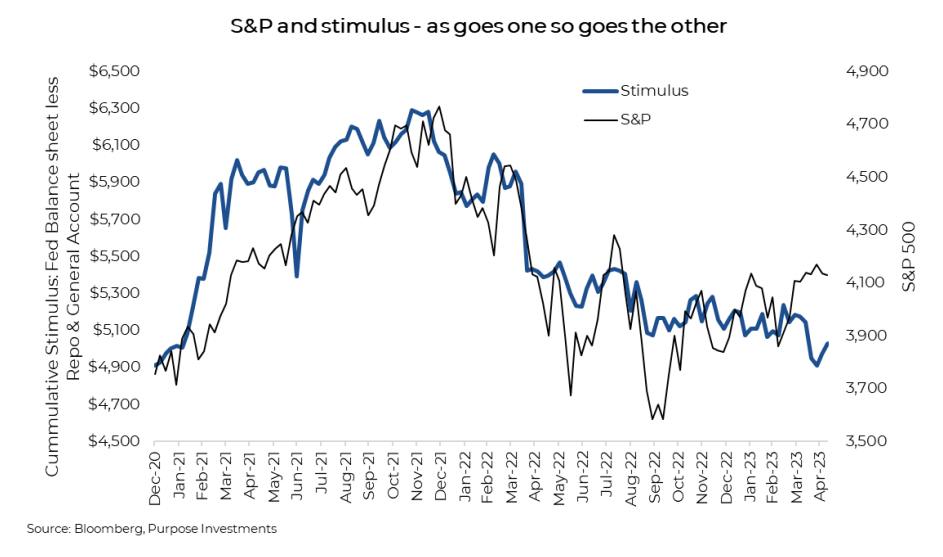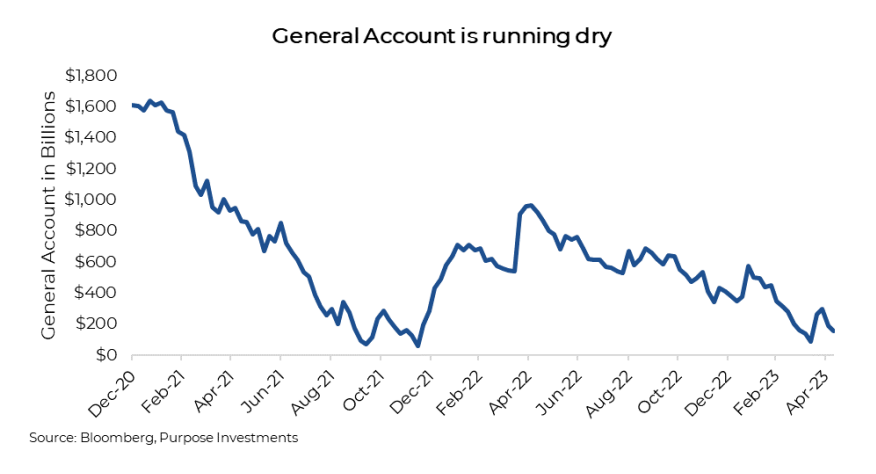Good News, Good News, and More Good News
Good News, Good News, and More Good News
Over the past few weeks, we would say the news has been tilted solidly towards the ‘good’ side. The world’s largest central bank (Fed) effectively announced the cessation of rate hikes, ending a fourteen-month journey that raised overnight rates from 0.25% to 5.25%. Yay!!!
Q1 earnings season is wrapping up, and it finished stronger than it began. With over 90% of companies having reported, 77% surprised to the upside, with an average magnitude of 6.5%. We have not seen that large of a surprise in a couple of years. Of course, you could be bearish and point out that Q1 earnings had been almost $60, and forecasts fell over the past few months to just over $50. So the surprises were against some rather low forecasts. Nonetheless, the earnings season finished well. Yay!!!
Inflation has improved. The US reported April CPI data that continued to show signs of improvement. It was the first year-over-year print below 5% in the past two years, at 4.9%. Yay!!! Labour remains resilient in both Canada and the US. Of course, this is a double-edged sword as too much good news would be inflationary, but a strong report for both Canada and the US, including solid gains in higher-paying jobs, is good news for the economy. At least showing recession risk as not being imminent. Yay!!!
Sure, there is some not-so-good news as well. Consumer confidence moved lower, the debt ceiling remains top of mind, and the US regional bank stresses remain. But taken as a whole, the news of the past couple of weeks has been good. One would expect this preponderance of good news to lift the market higher, but that hasn’t happened. The daily gyrations have been up and down, but overall, markets are down slightly in May so far. The S&P and TSX are both off a minor 1%.
When good news fails to lift markets higher, Mr. Market is saying something and we should all listen. In the near term, the path of least resistance may be to the downside.
Debt Ceiling
We have a history of rarely weighing in on politics for a few reasons. One, we believe the economy is usually a bigger deal than any change in policy. Of course, there are exceptions to this, but it is a good general rule. Secondly, good luck trying to guess the likely path of policy decisions, as what should be done for the markets/economy is often confounded by ideological views. Thirdly, even if you ‘guess’ right as to what the policy, announcement or outcome may be, how the market reacts is equally challenging and often surprising.
Take the debt ceiling debate. We feel confident it will be raised, but how we get there is a guess. Maybe it will be resolved quickly without any disruption. That is our base case, remembering back to the last time this became a tenacious topic over a decade ago. The government started to shut down, which impacted people who voted, resulting in a drop in support for the party viewed as the blocker. Neither party likes to lose votes.

A debt ceiling resolution would certainly be good news, and perhaps markets would react positively. BUT, that may be short-lived. The markets for much of the past few years have been very sensitive to the amount of stimulus. During periods of more stimulus, equity markets have advanced, and during periods of dwindling stimulus, markets have fallen. The above chart highlights this relationship. While not a perfect fit, directionally, it is very strong.
Stimulus is a combination of measurements that really center around the Federal Reserve’s balance sheet. Most are aware of the expansion of Fed assets as a quantitative stimulus tool at their disposal. The stimulus we track includes this and also incorporates the Repo market and General Account. The Repo market is a kind of parking spot for excess liquidity for banks and other institutions. Effectively it is money being diverted out of the economy/markets and being re-deposited with central banks. So the size of the Repo market is subtracted from the total stimulus.
The interesting component of the debt ceiling is the General Account. Think of this as the government’s chequing account. If they write cheques to consumers or businesses or for projects, this is stimulus back into the economy, and the account goes down. That is why the account is subtracted from the stimulus. So if the account gets smaller, that is stimulus. And it sure has gotten smaller.

With the debt ceiling looming, the General Account has been bled almost dry. So what will happen when the debt ceiling is raised? Well, the government will likely replenish this account by issuing Treasuries. As investors buy those Treasuries, money/liquidity/stimulus will be removed from the markets. So that aqua line in the first chart will likely move lower. And what about the other assets on the Fed’s balance sheet? Well, the Fed has continued to reduce their asset holdings, combining for potentially an even bigger drop in the total stimulus.
This is a simplified lens into central bank balance sheets regarding the ebb and flow of stimulus. And we have omitted the stimulus provided to banks via Primary Credit Loans and the Bank Term Funding Program. Both of which exploded in size as US regional banks rushed to replace fleeing deposits. Technically this is a stimulus not captured in our framework. But that is because we do not believe banks using these programs are rushing out to inject that money into the economy via loans or investments. Most banks are becoming increasingly tight on lending, given the uncertainty of their deposit base.
Final Thoughts
A resolution to the debt ceiling will be good news since no resolution is really bad news. But it may not prove to be a lasting panacea for the markets as it could trigger less stimulus in the weeks or months afterwards. So once again, even this good news may do little to lift markets higher.















